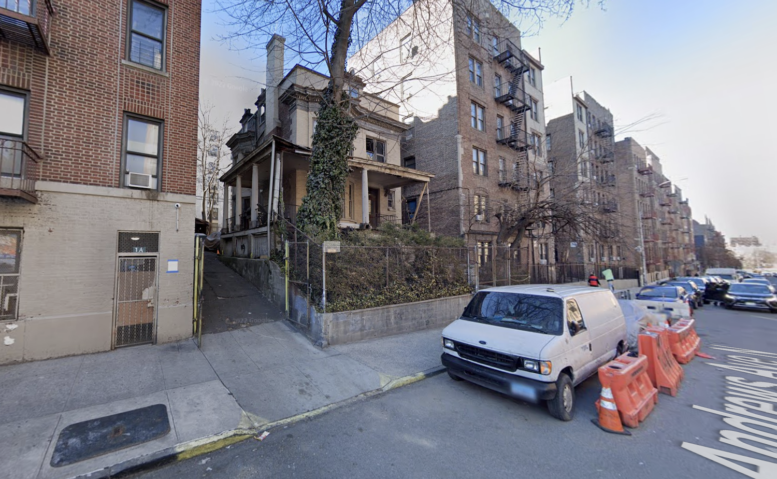Permits have been filed for a six-story residential building at 2267 Andrews Avenue North in University Heights, The Bronx. Located between West 183rd Street and West Fordham Road, the lot is near the 183rd Street subway station, serviced by the 4 train. Erenik Nezaj is listed as the owner behind the applications.
The proposed 70-foot-tall development will yield 16,305 square feet designated for residential space. The building will have 25 residences, most likely rentals based on the average unit scope of 652 square feet. The masonry-based structure will also have a 34-foot-long rear yard, eight open parking spaces, and three enclosed parking spaces.
Node Architecture Engineering Consulting is listed as the architect of record.
Demolition permits were filed at the end of last month for the 2.5-story structure on the site. An estimated completion date has not been announced.
Subscribe to YIMBY’s daily e-mail
Follow YIMBYgram for real-time photo updates
Like YIMBY on Facebook
Follow YIMBY’s Twitter for the latest in YIMBYnews


My,my where to park all the cars once the building is fully rented?
This part of the Bronx had many houses like this before the building of the Jerome Avenue line that set off a building boom of 6-story apartments in the 1920s.
Correct, and like I’ve mentioned in Bronx comments before the fact that many more of the old single family house holdouts weren’t replaced by apartment houses back then is really a fluke of history, primarily the Great Depression immediately followed by a world war that when finished saw the entire nation’s housing preference [artificially] shift to suburban. And then came multiple decades of urban decline locking many outer borough neighborhoods in amber… until relatively recently.
The Bronx had a ton of Great Depression era development. There was a lull in construction from 1932 to 1934, but after that there were many 6 story apartment buildings built until WWII broke out.
The first time I went down the Grand Concourse, I was amazed at all the Art Deco apartment buildings. It’s almost like a Miami North.
You should check out the West side of Washington Heights and Inwood as well. It’s filled with an equally high concentration of mid 1930s to early 1940s Art Deco apartment buildings.
You’re not wrong, but it’s undeniable the development would have been even more vigorous without a decade long major economic downturn. The demand pre-war for middle class Bronx housing propelled development. Then a war stopped most of that and when it was over a nationwide suburbanization trend (aided by the federal gov) paired escalating socioeconomic and demographic changes pretty put a stop to large scale market rate developments in the borough. Much of what came after were NYCHA projects and other subsidized multi-family housing. The borough would continue to see small scale SFH/2-Family market rate construction in lower density and more middle class areas like the East Bronx but the era of intense apartment house construction in the West and South Bronx was pretty much over — until the last 10 years or so.
I aree with everything you’re saying. If not for the Depression, there would be more development in both The Bronx and Manhattan during this time period. It seems like construction was picking up again right before WWII, with 240 Central Park South being an example. It’s unfortunate because it would have been cool to see what 1942-1945 architecture looked like, as well having as the increased housing stock.
It’s refreshing that there’s a demand to building things all over The Bronx besides Fedders House junk. Unfortunately, a lot of it is only a notch or two better in terms of appearance
Well, who would buy a house like this that is boxed in by much taller buildings? This is the usual fate of “holdouts.”
Until July 1976, I lived in the West Bronx on Sedgwick, just around the corner from the building with the partial collapse on Burnside. I saw a news item on the decaying Bronx in December of that year which showed Burnside with all the retail gone and the apartments abandoned. I guess I got out just in time. I think many of the buildings were restored under Koch and from what I can see on Google, the area is far more prosperous than in my day. This is evidenced by the new construction as in this article.